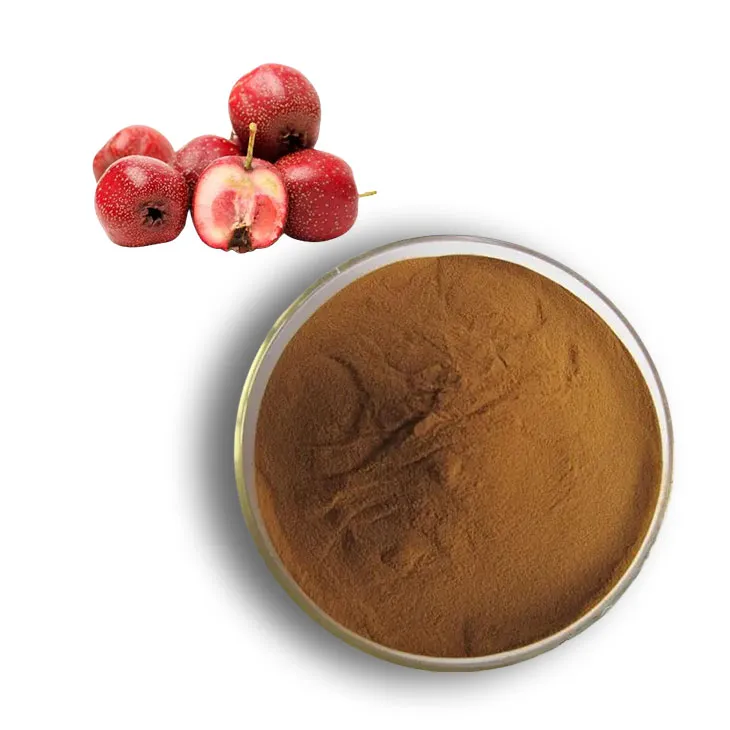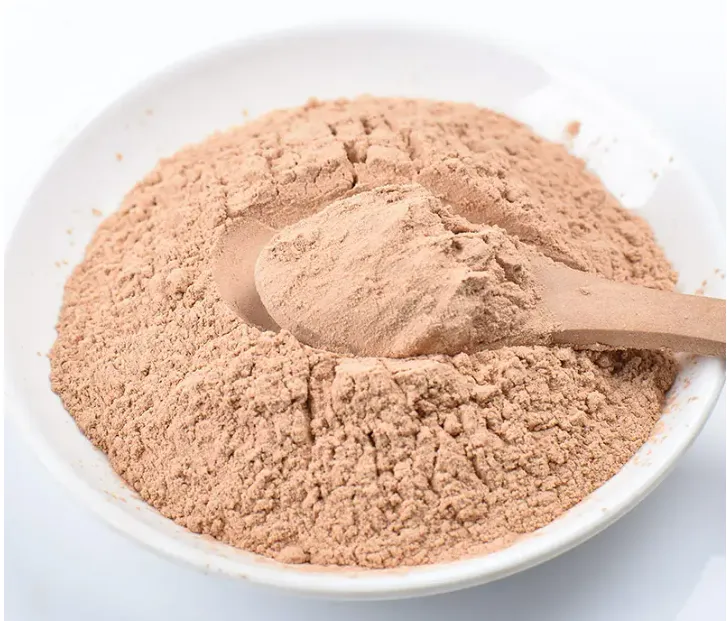- 0086-571-85302990
- sales@greenskybio.com
The flavor of ripe hawthorn and natural hawthorn extract.
2024-11-13

1. Introduction to Ripe Hawthorn Flavor
Ripe hawthorn flavor is a unique and iconic taste that has been deeply ingrained in the culinary traditions of many regions. It is often associated with a variety of traditional snacks and beverages. This flavor is a complex combination of different elements that together create a distinct sensory experience.
1.1 Acidity in Ripe Hawthorn Flavor
One of the prominent aspects of the ripe hawthorn flavor is its acidity. The acidity gives the hawthorn a tangy and refreshing quality. It is this acidity that can make the mouth water and stimulates the taste buds. In traditional snacks, such as hawthorn candies, the acidity provides a contrast to the sweetness, creating a well - balanced flavor profile. In beverages, like hawthorn - flavored tea, the acidity adds a zesty note that can cut through other flavors and provide a lively taste.
1.2 Astringency of Ripe Hawthorn
Astringency is another characteristic component of the ripe hawthorn flavor. This astringency gives a slightly puckering sensation in the mouth. It is not overpowering but rather adds a layer of complexity to the overall flavor. In some traditional preparations, the astringency is moderated through cooking or by combining the hawthorn with other ingredients. For example, when making hawthorn jam, the addition of sugar helps to counterbalance the astringency, while still retaining some of its unique flavor qualities.
1.3 Underlying Sweetness
Beneath the acidity and astringency, there is an underlying sweetness in ripe hawthorn. This sweetness is often more pronounced in fully ripe hawthorns. It is a natural sweetness that is different from the intense sweetness of refined sugars. In traditional hawthorn - based products, this natural sweetness is enhanced and complemented by other ingredients. For instance, in hawthorn - filled pastries, the natural sweetness of the hawthorn combines with the buttery and flaky pastry to create a delicious and indulgent treat.

2. The Composition of Ripe Hawthorn Flavor
The flavor of ripe hawthorn is the result of a complex composition of various chemical compounds. These compounds contribute to the different aspects of its taste, aroma, and overall sensory perception.
2.1 Organic Acids
Organic acids play a crucial role in the acidity of the ripe hawthorn flavor. Citric acid and malic acid are among the main organic acids present in hawthorn. Citric acid gives a bright and citrus - like acidity, while malic acid contributes a more tart and fruity acidity. These acids are not only responsible for the taste but also have an impact on the preservation of hawthorn - based products.
2.2 Tannins
Tannins are the compounds responsible for the astringency in hawthorn. They are polyphenolic compounds that bind to proteins in the mouth, causing the puckering sensation. The amount of tannins can vary depending on the variety of hawthorn and its ripeness. As the hawthorn ripens, the level of tannins may decrease, which can affect the overall astringency of the flavor.
2.3 Sugars and Other Compounds
Fructose, glucose, and sucrose are the main sugars present in ripe hawthorn, contributing to its underlying sweetness. In addition to sugars, there are also various volatile compounds that contribute to the aroma of the hawthorn. These volatile compounds include esters, aldehydes, and ketones, which give the hawthorn its characteristic fruity and floral smell.

3. Natural Hawthorn Extract: An Overview
Natural Hawthorn Extract is a concentrated form of the beneficial components found in hawthorn. It is obtained through various extraction methods that aim to isolate the key compounds from the hawthorn fruit, leaves, or flowers.
3.1 Extraction Methods
There are several methods for extracting natural Hawthorn Extract. One common method is solvent extraction, where solvents such as ethanol or water are used to dissolve the active compounds from the hawthorn material. Another method is supercritical fluid extraction, which uses supercritical carbon dioxide as the solvent. This method is often preferred as it is more environmentally friendly and can produce a high - quality extract with a pure flavor profile.
3.2 Concentration and Purity
The natural hawthorn extract can be further concentrated to increase the potency of its active ingredients. The degree of concentration depends on the intended application. For use in dietary supplements, a higher concentration may be required to achieve the desired health benefits. The purity of the extract is also an important factor, as it ensures that there are no contaminants or unwanted substances in the final product.

4. Applications of Natural Hawthorn Extract
Due to its concentrated nature and unique flavor profile, natural hawthorn extract has a wide range of applications in various industries.
4.1 In the Food Industry
- Candies: Natural hawthorn extract can be used to enhance the flavor of candies. It can add a natural and authentic hawthorn flavor that is more intense than using whole hawthorn fruits. The extract can also be combined with other flavors, such as strawberry or raspberry, to create unique and complex candy flavors.
- Jams and Preserves: In jams and preserves, the extract can intensify the hawthorn flavor. It can also help in reducing the amount of added sugar, as the natural flavor of the hawthorn is more pronounced. This is beneficial for consumers who are looking for healthier alternatives with less sugar content.
- Teas and Beverages: Hawthorn - flavored teas are popular in many cultures. The natural hawthorn extract can be used to make high - quality hawthorn teas with a consistent flavor. It can also be added to other beverages, such as fruit juices or herbal blends, to add a touch of hawthorn flavor and its associated health benefits.
4.2 In Dietary Supplements
- Heart Health: Hawthorn has been traditionally associated with promoting heart health. The natural hawthorn extract contains compounds such as flavonoids and procyanidins that may help in reducing blood pressure, improving blood circulation, and protecting the heart against oxidative stress. As a dietary supplement, it can be an important addition for those at risk of heart diseases.
- Digestive Health: The extract may also have benefits for digestive health. It can help in stimulating digestion, reducing indigestion, and relieving abdominal discomfort. Some dietary supplements containing hawthorn extract are formulated specifically for digestive support.
4.3 In Natural Medicine Research
- Antioxidant Properties: The flavonoids and other compounds in hawthorn extract have antioxidant properties. This means that they can neutralize free radicals in the body, which are associated with various diseases and aging. Research is ongoing to further understand the potential of hawthorn extract as an antioxidant agent and its role in preventing chronic diseases.
- Anti - inflammatory Effects: There is evidence to suggest that hawthorn extract may have anti - inflammatory effects. This could be beneficial in treating inflammatory conditions such as arthritis or inflammatory bowel diseases. Scientists are studying the mechanisms behind these effects to develop new natural treatments.
5. Conclusion
The flavor of ripe hawthorn, with its complex combination of acidity, astringency, and underlying sweetness, is a unique and cherished taste in the world of food. Natural hawthorn extract, with its concentrated and beneficial properties, has found diverse applications in the food industry, dietary supplements, and natural medicine research. As our understanding of hawthorn and its extract continues to grow, we can expect to see even more innovative uses and potential health benefits in the future.
FAQ:
What are the main components of the flavor of ripe hawthorn?
The flavor of ripe hawthorn mainly consists of acidity, astringency, and underlying sweetness.
How is natural hawthorn extract made?
Natural hawthorn extract is typically made through processes such as extraction from hawthorn fruits using solvents or mechanical methods to concentrate the active compounds and flavors present in the hawthorn.
What are the common applications of ripe hawthorn flavor?
Ripe hawthorn flavor is often used in traditional snacks and beverages. It gives a characteristic taste to these products.
Why is natural hawthorn extract used in dietary supplements?
Natural hawthorn extract is used in dietary supplements because of its health - promoting properties. It may have potential benefits for heart health, digestion, etc.
How does natural hawthorn extract enhance the flavor in products like candies?
Natural hawthorn extract, with its concentrated and unique flavor profile, can add the characteristic taste of hawthorn to candies. It provides the acidity, astringency, and a touch of sweetness, which enriches the overall flavor of the candies.
Related literature
- The Chemical Composition and Flavor Profile of Ripe Hawthorn"
- "Applications of Natural Hawthorn Extract in the Food Industry"
- "Health - Promoting Effects of Hawthorn Extract: A Review"
- ▶ Hesperidin
- ▶ citrus bioflavonoids
- ▶ plant extract
- ▶ lycopene
- ▶ Diosmin
- ▶ Grape seed extract
- ▶ Sea buckthorn Juice Powder
- ▶ Beetroot powder
- ▶ Hops Extract
- ▶ Artichoke Extract
- ▶ Reishi mushroom extract
- ▶ Astaxanthin
- ▶ Green Tea Extract
- ▶ Curcumin Extract
- ▶ Horse Chestnut Extract
- ▶ Other Problems
- ▶ Boswellia Serrata Extract
- ▶ Resveratrol Extract
- ▶ Marigold Extract
- ▶ Grape Leaf Extract
- ▶ blog3
- ▶ blog4
- ▶ blog5
-
Organic Tongkat Ali extract powder factory.
2024-11-13
-
How to make powder with ashwagandha extract.
2024-11-13
-
Rosehip extract manufacturers from China.
2024-11-13
-
The best cat's claw extract in nature.
2024-11-13
-
Chinese Dandelion Leaf Extract Suppliers.
2024-11-13
-
Soy Extract
2024-11-13
-
Grapefruit Seed Extract Powder
2024-11-13
-
Eyebright Extract
2024-11-13
-
Beetroot juice Powder
2024-11-13
-
Peppermint Oil
2024-11-13
-
Hops Extract
2024-11-13
-
White Peony Extract
2024-11-13
-
Purple Sweet Potato Extract
2024-11-13
-
Curcuma Longa Extract
2024-11-13
-
Resveratrol extract
2024-11-13





















